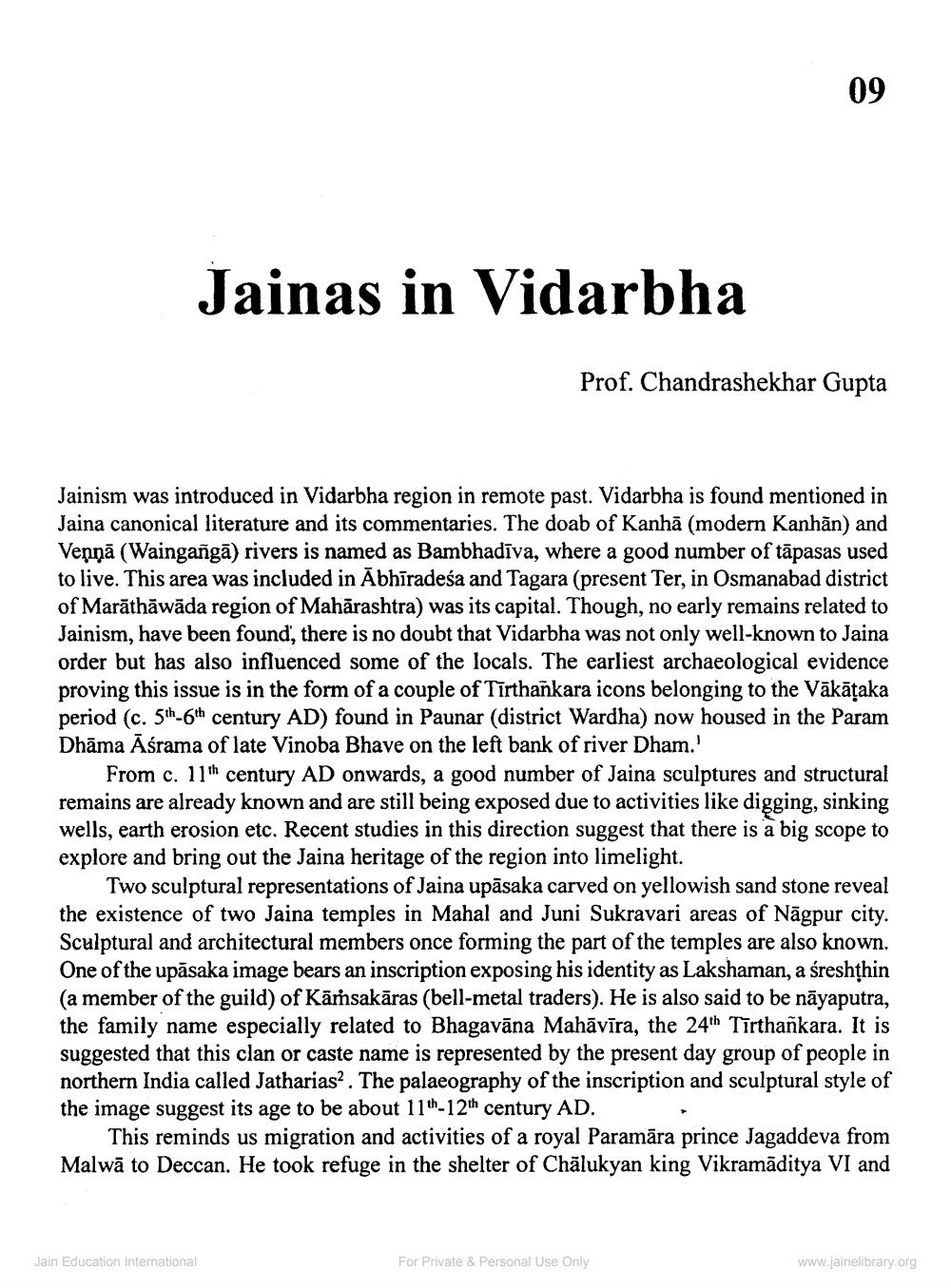________________
09
Jainas in Vidarbha
Prof. Chandrashekhar Gupta
Jainism was introduced in Vidarbha region in remote past. Vidarbha is found mentioned in Jaina canonical literature and its commentaries. The doab of Kanhā (modern Kanhān) and Vennā (Waingañgā) rivers is named as Bambhadīva, where a good number of tāpasas used to live. This area was included in Ābhīradeśa and Tagara (present Ter, in Osmanabad district of Marāthāwāda region of Mahārashtra) was its capital. Though, no early remains related to Jainism, have been found, there is no doubt that Vidarbha was not only well-known to Jaina order but has also influenced some of the locals. The earliest archaeological evidence proving this issue is in the form of a couple of Tīrthañkara icons belonging to the Vākāțaka period (c. 5th-6th century AD) found in Paunar (district Wardha) now housed in the Param Dhāma Āśrama of late Vinoba Bhave on the left bank of river Dham.'
From c. 11th century AD onwards, a good number of Jaina sculptures and structural remains are already known and are still being exposed due to activities like digging, sinking wells, earth erosion etc. Recent studies in this direction suggest that there is a big scope to explore and bring out the Jaina heritage of the region into limelight.
Two sculptural representations of Jaina upāsaka carved on yellowish sand stone reveal the existence of two Jaina temples in Mahal and Juni Sukravari areas of Nāgpur city. Sculptural and architectural members once forming the part of the temples are also known. One of the upăsaka image bears an inscription exposing his identity as Lakshaman, a śreshțhin (a member of the guild) of Kārsakāras (bell-metal traders). He is also said to be nāyaputra, the family name especially related to Bhagavāna Mahāvīra, the 24th Tīrthañkara. It is suggested that this clan or caste name is represented by the present day group of people in northern India called Jatharias. The palaeography of the inscription and sculptural style of the image suggest its age to be about 11th-12th century AD.
This reminds us migration and activities of a royal Paramāra prince Jagaddeva from Malwā to Deccan. He took refuge in the shelter of Chălukyan king Vikramaditya VI and
Jain Education International
For Private & Personal Use Only
www.jainelibrary.org




